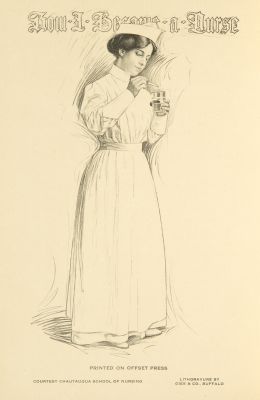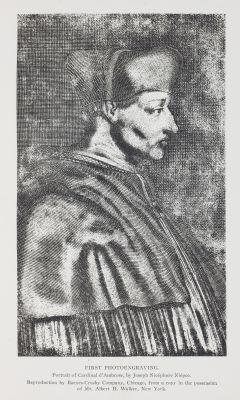
Title
Half-Tone of 1868Artist
UnknownPublication
Horgan's Half-Tone and Photomechanical ProcessesDate
1913 plate (1868 negative)Process
Halftone (Egloffstein)Atelier
F. A. Ringler Company, N. Y.Image Size
9 x 10 cm
Frederick Egloffstein invented “Heliographic engraving,” an intaglio halftone process which used a ruled screen, in 1865 and formed the Heliographic Engraving Company in NYC, with each employee knowing only one step in the process to keep it a secret. One of the unusual features of his plates is that they use more than one type of line screen in the same image. The Heliographic Engraving Co., was the first company to utilize the halftone method as a distinct business. In a reminiscence written by John Sartain (Wilson’s pg. 132) about his work with Von Egloffstein in 1861, he stated “His method consisted in photographing on a sensitive coating of asphaltum, through the glass screen plate ruled in one direction only, and also through the glass photographic copy of his subject; then dissolving out the unlit portions, and etching into the steel with acids, to produce the intaglio printing surface.” And also, “Baron Egloffstein and I differed much in our opinion as to the proper number of lines to the inch for the screen-plates. He wanted them made over 250 lines to the inch, which I told him could not be well printed with the ink in common use. My arguments and the proving of his plate induced him to let me make the latest screens, about 220 lines to the inch; but he contended that special ink should be made, ground fine enough to print anything that could be engraved.” After the work was done in 1861 Von Egloffstein entered the Union Army and did not resume work on his method until 1863. John Sartain was America’s premier mezzotint engraver from Philadelphia. [1]
References
[1] Hanson, David Checklist of photomechanical processes and printing 1825-1910, 2017 p. 50


